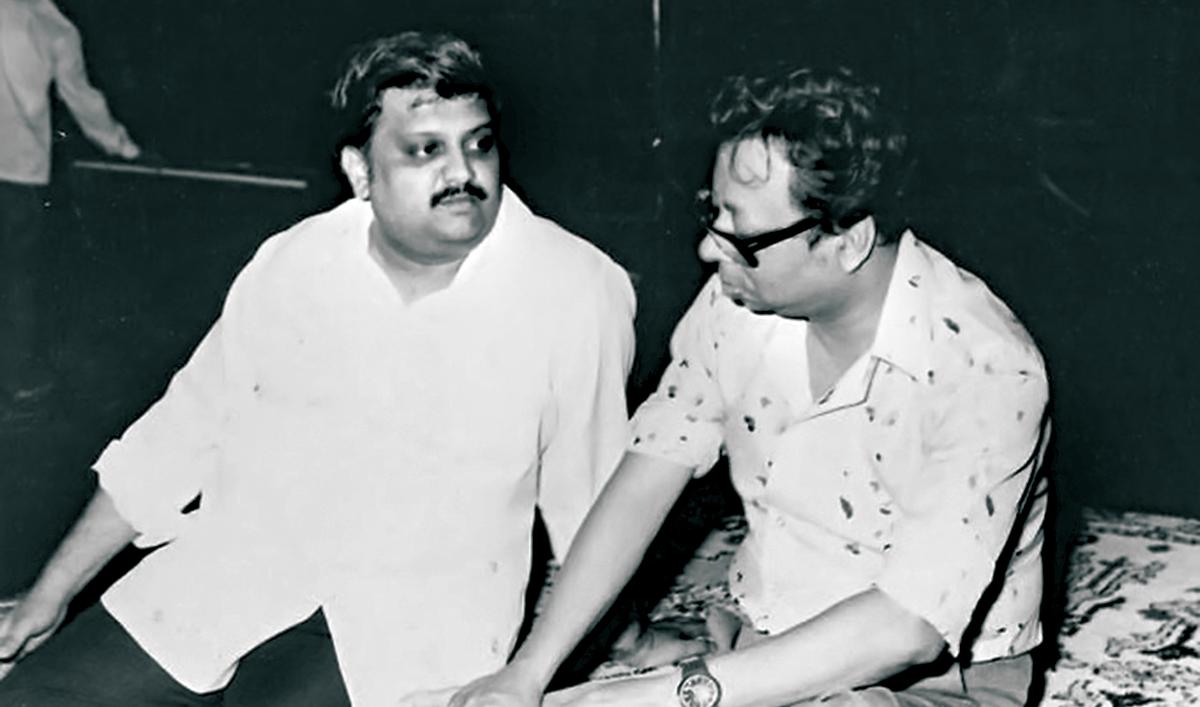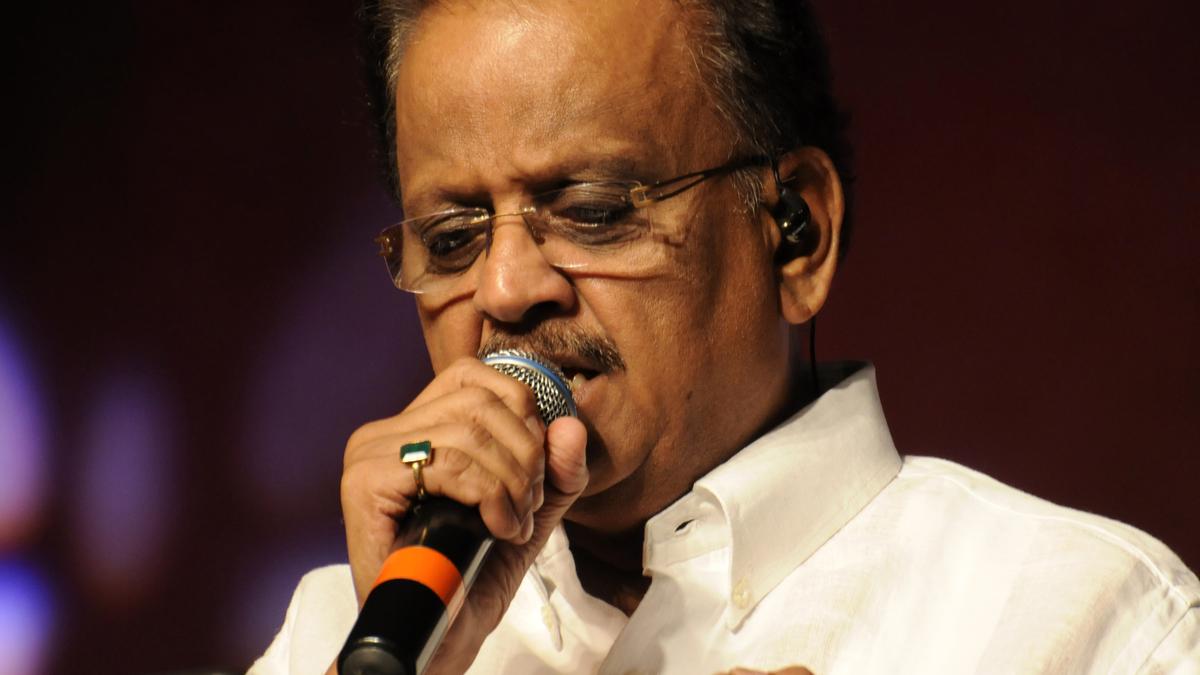Whenever I get to watch a video of SP Balasubrahmanyam talking about his work, I am reminded of how little we talk about our artists in this part of the world, especially about the processes that go into their technique or mastery. Thanks to a few interviews from the last years of his career and his comments on reality shows, we keep getting some precious glimpses of the incredible artist he was.
SPB, who passed away in September 2020 due to Covid-19 complications, would have turned 78 on June 4. Attempting to unravel his brilliance as a playback singer is a delight, even if we just scratch the surface of his staggering body of work, which spans thousands of songs, languages, genres, decades and generations of musicians. You always find something new, something that impresses you.
What was so incredible about SPB? Was it the number of songs he sang? His unmatched consistency and adaptability? The texture of his voice? The skill? All of the above and much more. If one talks about vocal music, technique is the most important. It is largely about vocal range, accuracy in hitting the notes, pitching, breath control, modulation, ability to stick to the tempo and versatility in voice production and effects.
There is technique, and then there is SPB. His mastery of Indian playback singing, arguably unmatched, is all about the way he used technique. Apart from the superb tone and timbre of his voice, his command over it, his ability to express emotions with his voice was unique and truly special.

SP Balasubrahmanyam and RD Burman. | Photo Credit: The Hindu Archives
In an interview in 2012 HinduSPB said he probably has an edge over other singers because he is a good actor. “I can emote very well physically and my ability to emote with my voice is just an extension of that,” he said.
Thinking about this, SPB was a great storyteller who could keep listeners captivated. His voice and artistry became formidable tools that aided his communication. The brilliant MS Viswanathan has given us a chance to enjoy this feature of SPB’s voice in his creation. Varumayin Niram Sivappu For actor Kamal Haasan in 1980. Lines by Subramaniam Bharati Tirtha KarayinileThere’s a lot of intensity surrounding the failure of a loved one to keep a promise. Offering a masterclass in restraint, MSV uses very few chords in the background and puts the human voice at the center to express betrayal and anguish in this moving composition. When you listen”Vartai thavarivittai Kannamma, Marbu thudikkudhadi” In SPB’s voice, you can’t help but feel that searing pain and despair.
I tried to imagine how SPB, then thirty years old, would have recorded this song in MSV’s studio, at a time when retakes were frowned upon and piecemeal editing was unheard of. He would have read the lines, understood their meaning, empathised with the situation and the character, learnt the tune from the composer and practised it by adding different voice effects such as a sustained breath, a delicate vibrato, gradually lowering the volume and then finally chose the version that MSV approved. With experience and time, he would have had to try out lesser versions before finding the most suitable version.
Reading , ‘There was a sense of coherence and comfort in SPB’s voice, the peaceful solitude seemed exaggerated’
Kamban Yamadan From Nizhal Nijamgiradhu, 1978 Another fascinating composition by MSV. In a conversation with pianist Anil Srinivasan a few years ago, SPB had described the different ‘Yemeni Everything that MSV created had a word that conveyed certainty or finality. SPB could hardly hide his admiration for the composer’s ability to craft musical phrases to express a particular idea. Equally evident was his keen observation and admiration for the idea, which he understood and echoed so effectively in his singing. Giving due praise to the singer, Kamal Haasan said in a television show a few years ago, “You just listen to SPB’s voice and then act [in a song] “It comes naturally. You just know how to express the emotion.” SPB and Kamal Haasan displayed this chemistry with a few lines Kamban Yamadan.
For a listener, there is a lot of excitement in anticipating this distinct emotional component of SPB’s singing. It is not just in the poignant songs. Fans also wait for SPB’s voice (including the speaking voice) to emerge from heavily orchestrated, jubilant songs, such as the iconic Ilma Ido Ido By Ustad Ilaiyaraaja (Sakalakala Vallavan1982).
There’s no mystery, because you know when it will happen and how great it will feel. But every time you wait for that moment, for that energy that is in his voice and reaches the listener forever. There’s excitement, but there’s also security. Like the feeling when you see a familiar face among a big crowd.
The Ilaiyaraaja-SPB duo is a remarkable pair, which created one of the most glorious chapters in the history of Tamil film music. If Ilaiyaraaja brought a radical newness and richness in sound, which simultaneously democratised music by broadening its appeal, and expanded its scope by introducing different flavours and emotions, SPB was his lead singer. Ilaiyaraaja’s astonishing musical brain found an ever responsive partner in SPB’s charming voice.
Charanam or the beginning of a paragraph Men Panju Megangal In O Spring King (Neengal Kettavai, 1984, It’s a great example of collaborative creative energy. Another favorite number is Rojavai Thalattum ThendralFrom Ninaivellam Nithyas1982. These are romantic duets that are expectedly romantic. But even when Ilaiyaraaja comes Kadhalin deepam ondru, A daring novel on a romantic single for actor Rajinikanth Thambikku Entha OoruIn 1984, SPB’s voice responded with equal tenacity.
There are countless examples of these two partying to peppy songs. n pair manja kuruvi From Vikram1986 is one of them. It was a video clip of SPB’s live performance, which shows how demanding the song is, in terms of jumping octaves and changing moods because you actually see one man doing it all.
A.R.Rahman’s entry into the industry Roza In 1992, he brought a whole new sensibility to Indian film music. The grandeur of his compositions, enhanced by his clever use of technology, introduced us to a new level of excellence in sound production. Rahman’s studio did to SPB’s voice what sophisticated cameras did to capture stunning landscapes, capturing even the subtle dynamics and nuances of the voice. There is more to attend to and more to it.
SP Balasubrahmanyam and AR Rahman
SPB has been a part of Rahman’s journey since the beginning of his career. Kadal RojaveAnd we got a bigger canvas with a composer who is known for encouraging his singers to improvise. And we got one hit after another, like Pennala Pennala Oothapoo ,Uzhavan1993)where you hear a very affected SPB, Kulicha Kuthalam ,Couple1994) in which he is flirting Minnale Nee Vanththennadi (May Madham, 1994) in which he has given a heart-broken and very majestic voice Oruvan Oruvan Mudlali (Muthu, 1995)These are just a few examples of SPB effortlessly conveying a variety of emotions and styles, that too in a voice that refused to age.
Pay attention en kadhale ,Couple1994) where he brings equal parts passion and compassion. At one level, a student of music can break down the effect in terms of how he sustains notes, uses his breath, and uses a slight vibrato when the character in the film sheds tears while singing. One can try, and perhaps even successfully copy those elements from his technique. The effect will, at best, be somewhat similar, but never exactly the same. After all, there is technique. And then there is SPB.
